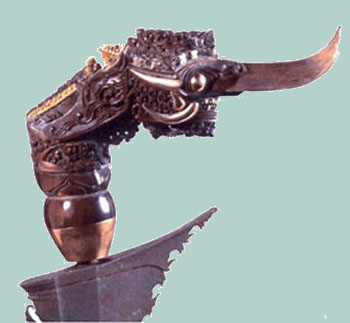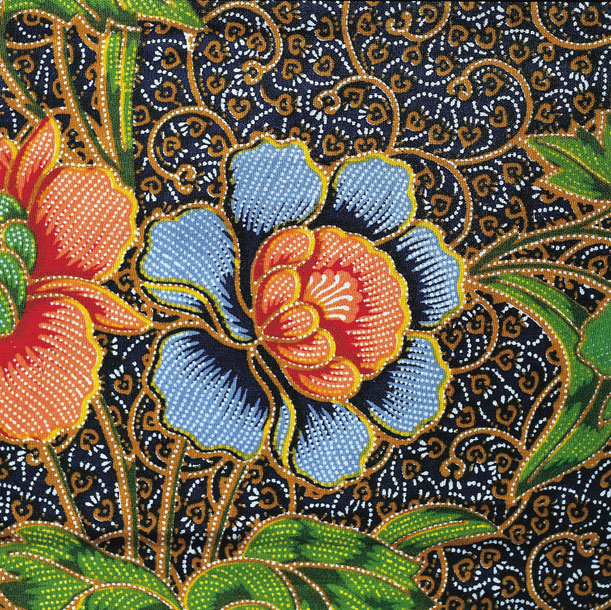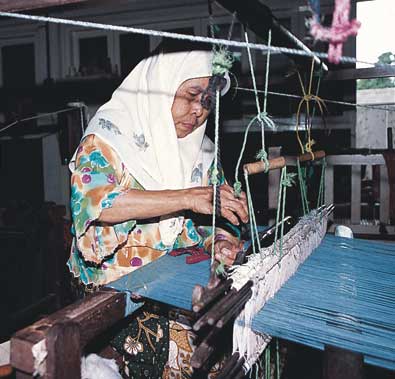Batik
Hindu traders first brought batik to Malaysia eons ago, and the art of dying fabric has been an established tradition for centuries. Designs are first sketched out on cloth, then blocked off with wax outlines. They are then painted and later sealed with TK.
Kite (Wau)
Kites, called waus, are painstakingly designed and crafted in vibrant colors and patterns. Intricate floral cutouts are pasted on, building up the design until the kite is ready for the bright paper tassels that complete its decoration. Kite construction is an ancient art passed down from the nobles of the Melakan court.
Pewter
Having the world’s largest reserves of tin, it seems appropriate enough that Malaysia also produces what is widely regarded as the world’s finest pewter. Most of it is produced at the Royal Selangor Pewter Factory, which lies just outside of Kuala Lumpur. The factory was founded in 1885 by Yoon Koon, a Chinese artisan who crafted objects only for the aristocracy. Today Royal Selangor is the largest single manufacturer of fine pewter in the world, and and it is still run by Koon’s third-generation descendants. The factory gives a full tour of the production floor, and visitors to the gift shop have the privilege of buying any of the items duty-free.
Weaving
The jungle provides an abundance of ideal materials for Malaysia’s many types of weaving. The thorny vines of the rattan tree, for example, are worked and woven into comfortable chairs and tables — unique furniture that was so popular with the English that it could be seen in the parlors of just about every British resident. The strong and versatile fronds of the sago palm are also superbly suited for crafting. In Borneo, the sago is dyed and woven into beautiful and distinctly patterned jewelry, baskets, hats, floor mats, and more.
Wood Carving
On both the peninsula and in Borneo, wood carving reaches an astounding level of intricacy. What is truly special about this art form in Malaysia is that all of her cultures have perfected it. You see it everywhere: in the delightful porticos of Malay houses, in the roofs and altars Chinese and Hindu temples, on the prows of colorful fishing boats, and in the burial poles and masks of Sarawak.
The Art of Keris Making
A keris is can only be made by an empu, a revered artisan who is also endowed with magical powers. Once an empu selects a day to begin the task, he fasts and prays, warding off evil spirits and wining the favors of the demit, or good genies. To forge a kris blade, the empu alternates one layer of steel with two layers of special iron extracted from a meteorite. This is necessary for the pamor, or silvery marbling of the blade. The layers are forged together and flattened. To obtain a particular pamor, the empu twists the two halves of the steel bar separately. This is repeated as many times it takes to get the desired effect. The sequence of layering, bending, beating and forging forms a number of layers. Generally, a good kris has 64 layers of iron and pamor. It is said that some have thousands.
The blade is forged into its final shape, straight or curved, then given ribbing and tang. Using very fine files, grindstones, and chisels, the ribbing is heightened, relief created on the blade, and the ricikan (the characteristic teeth or projections on a kris) is chiseled. Finally, the emput makes the ganja, or base, and tempers the blade by bringing it to red hot and immersing it rapidly in coconut oil. The entire process can take months, partly because the empu will only work on days that he considers favorable. The blade is considered incomplete until it is merged with the handle and the sheath, and the owner has made offerings and contacted the spirit of the kris by dream.

– Malaysia 2002



